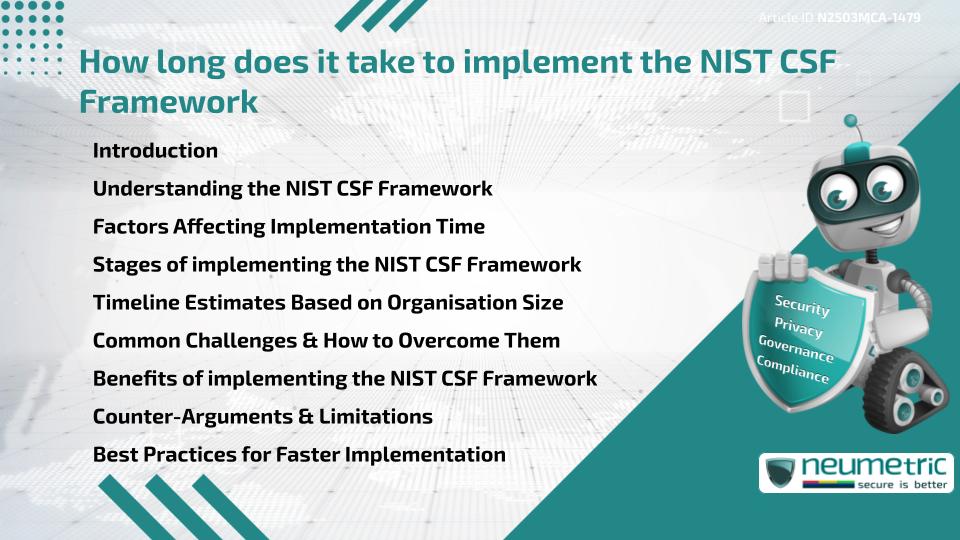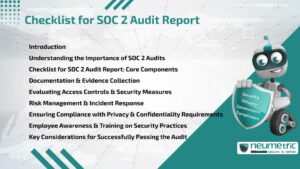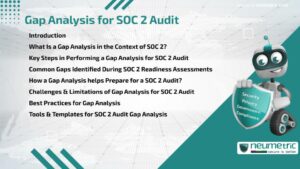Table of Contents
ToggleIntroduction
The National Institute of Standards & Technology [NIST] Cybersecurity Framework [CSF] provides organisations with a structured approach to managing Cybersecurity risks. However, organisations often ask, “How long does it take to implement the NIST CSF framework?” The timeline depends on several factors, including the organisation’s size, maturity, & available resources. This article explores these variables & offers insights into realistic implementation expectations.
Understanding the NIST CSF Framework
The NIST CSF Framework is a voluntary set of guidelines that help organisations enhance their Cybersecurity posture. It consists of five core functions: Identify, Protect, Detect, Respond, & Recover. While the Framework does not prescribe specific timelines, implementation time can vary widely based on how these functions are integrated into an organisation’s operations.
Factors Affecting Implementation Time
Several factors influence how long it takes to implement the NIST CSF framework:
- Organisation Size: Larger organisations with complex IT infrastructures may require more time.
- Current Security Maturity: Organisations with existing security policies aligned with NIST CSF may experience a faster transition.
- Resource Availability: Sufficient budget, personnel, & expertise can accelerate the process.
- Regulatory Requirements: Compliance needs may impact how quickly changes can be made.
- Leadership Support: Strong backing from leadership can help ensure timely implementation.
Stages of implementing the NIST CSF Framework
Implementation follows a structured approach:
- Assessment (1-3 months): Organisations evaluate current security posture against NIST CSF guidelines.
- Planning (2-4 months): A roadmap is developed, prioritizing key areas for improvement.
- Implementation (6-18 months): Security controls & policies are deployed.
- Monitoring & Improvement (Ongoing): Regular assessments ensure continued alignment with the framework.
Timeline Estimates Based on Organisation Size
- Small Businesses (6-12 months): Less complexity allows for quicker implementation.
- Mid-Sized Organisations (12-24 months): More systems & processes require additional effort.
- Large Enterprises (18-36 months): Extensive infrastructures & compliance requirements extend the timeline.
Common Challenges & How to Overcome Them
- Lack of Expertise: Organisations can invest in training or hire external consultants.
- Budget Constraints: Prioritizing critical security areas can help manage costs.
- Resistance to Change: Engaging leadership & staff through awareness programs can ease adoption.
- Integration with Existing Policies: A phased approach allows for smoother transition.
Benefits of implementing the NIST CSF Framework
Organisations that successfully implement the NIST CSF Framework experience:
- Improved cybersecurity posture
- Better regulatory compliance
- Increased stakeholder trust
- Enhanced risk management capabilities
Counter-Arguments & Limitations
While beneficial, the NIST CSF Framework has some limitations:
- Voluntary Nature: Organisations may not be legally required to follow it.
- Resource Intensive: Small businesses may struggle with implementation costs.
- Not a One-Size-Fits-All Solution: Customization is required for different industries.
Best Practices for Faster Implementation
- Start Small: Begin with critical security areas before expanding.
- Use Automation: Security tools can streamline processes.
- Engage Leadership: Executive support accelerates decision-making.
- Regular Assessments: Frequent evaluations help maintain alignment with the framework.
Conclusion
The time required to implement the NIST CSF Framework depends on several factors, including organisation size, existing security maturity, & resource availability. While smaller businesses may complete implementation within a year, larger enterprises can take multiple years. However, with careful planning & adherence to best practices, organisations can optimize the process & improve their Cybersecurity resilience.
Takeaways
- Implementation timelines range from months to years depending on organisational factors.
- Key factors include size, maturity, leadership support, & available resources.
- Implementation follows stages: assessment, planning, execution, & monitoring.
- Challenges such as budget constraints & expertise gaps can be managed with strategic approaches.
- The NIST CSF framework enhances cybersecurity but requires ongoing maintenance & adaptation.
FAQ
How long does it take to implement the NIST CSF Framework for a Small Business?
A Small Business can implement the Framework within six (6) to twelve (12) months, depending on resource availability & existing security policies.
Can the NIST CSF Framework be implemented in phases?
Yes, organisations often adopt a phased approach, starting with high-priority areas before expanding implementation across all functions.
What is the most time-consuming part of implementing the NIST CSF framework?
The implementation phase, which involves deploying Security Measures & integrating policies, typically takes the most time, ranging from six (6) to eighteen (18) months.
Do organisations need external help to implement the NIST CSF framework?
It depends on internal expertise. Some organisations rely on in-house teams, while others seek external consultants for guidance.
How does leadership support affect implementation time?
Strong leadership support helps accelerate decision-making, secure funding, & ensure organisation-wide adoption of the framework.
Need help?
Neumetric provides organisations the necessary help to achieve their Cybersecurity, Compliance, Governance, Privacy, Certifications & Pentesting goals.
Organisations & Businesses, specifically those which provide SaaS & AI Solutions, usually need a Cybersecurity Partner for meeting & maintaining the ongoing Security & Privacy needs & requirements of their Clients & Customers.
SOC 2, ISO 27001, NIST, HIPAA, HECVAT, EU GDPR are some of the Frameworks that are served by Fusion – a centralised, automated, AI-enabled SaaS Solution provided by Neumetric.
Reach out to us!





